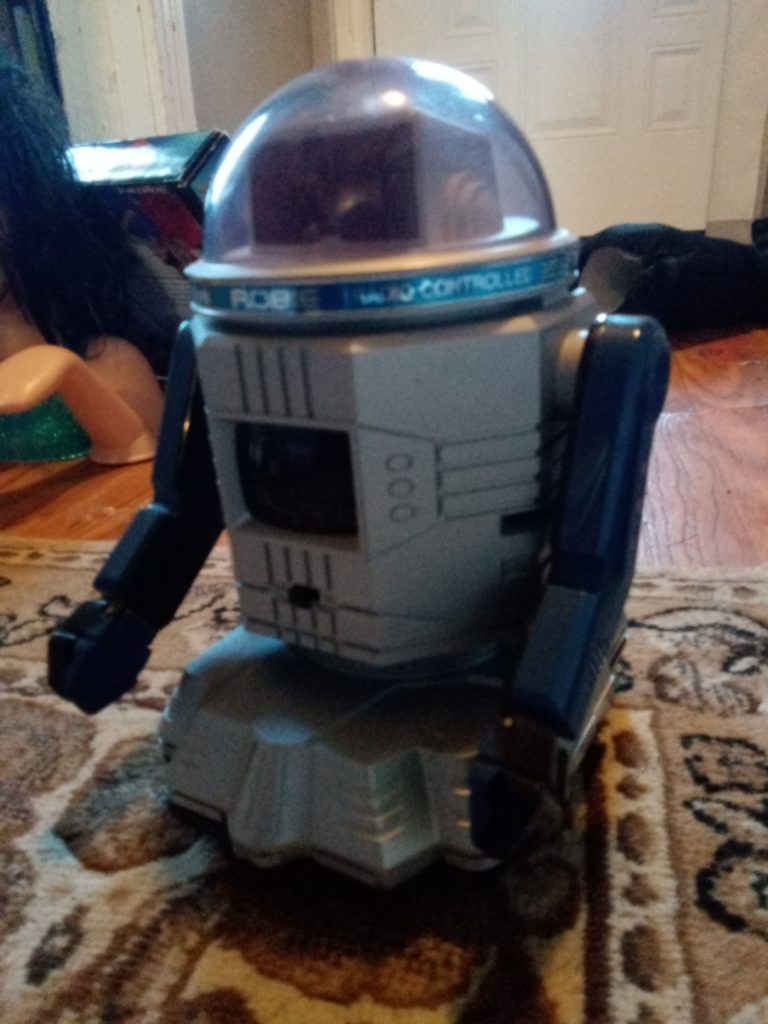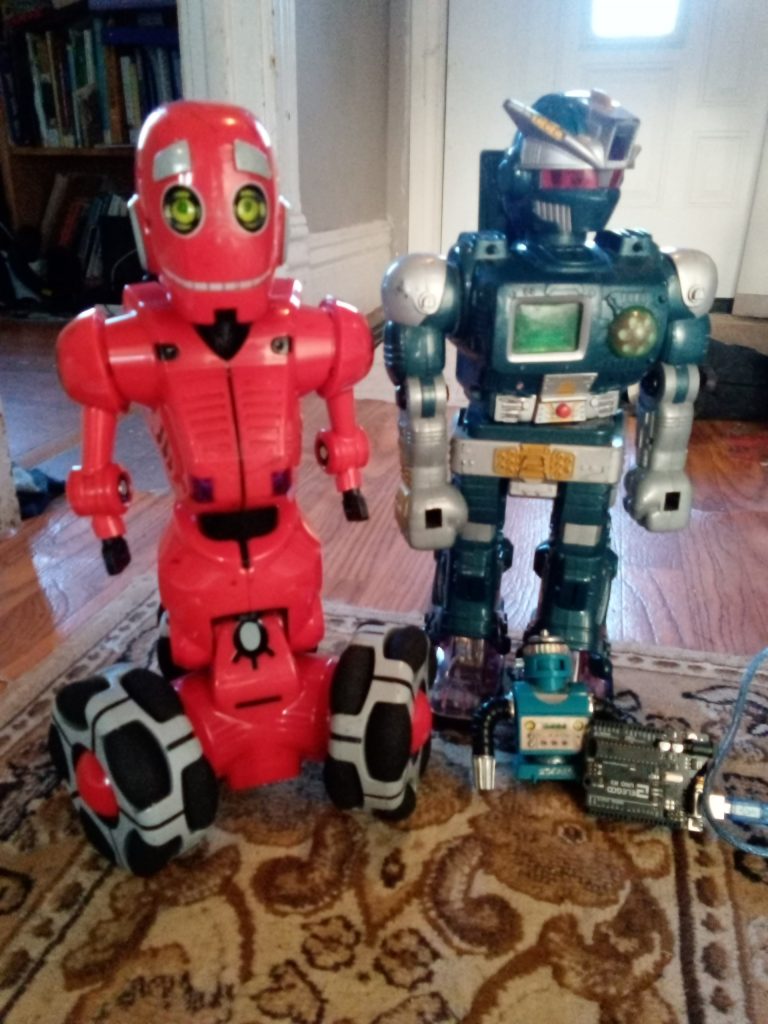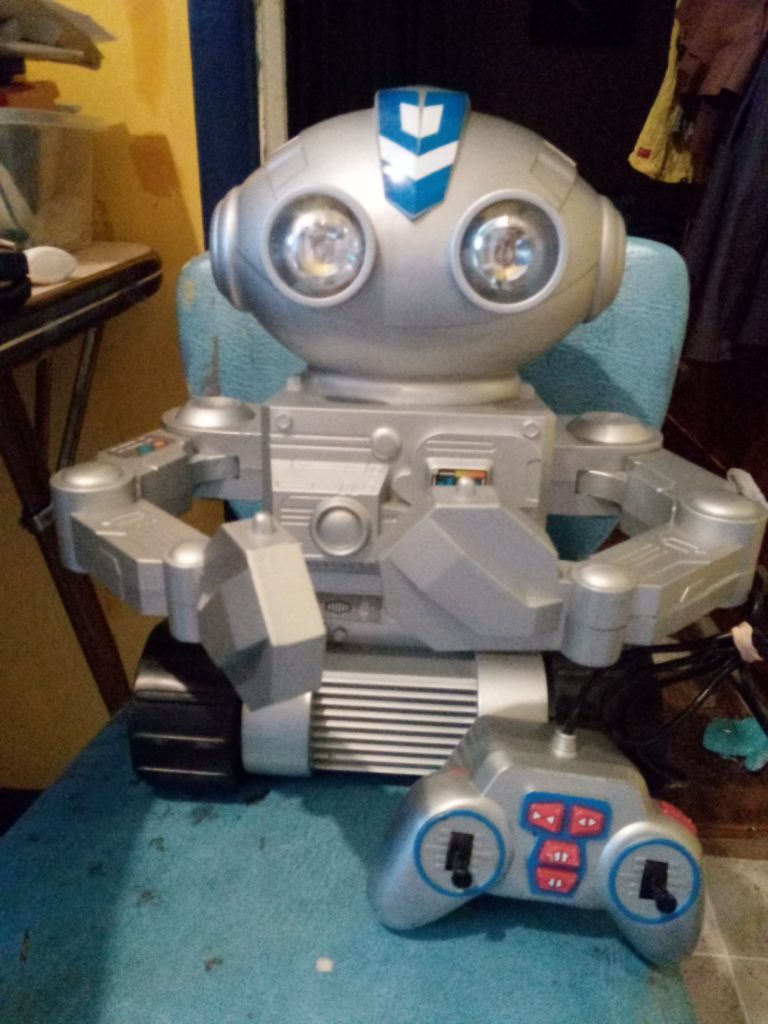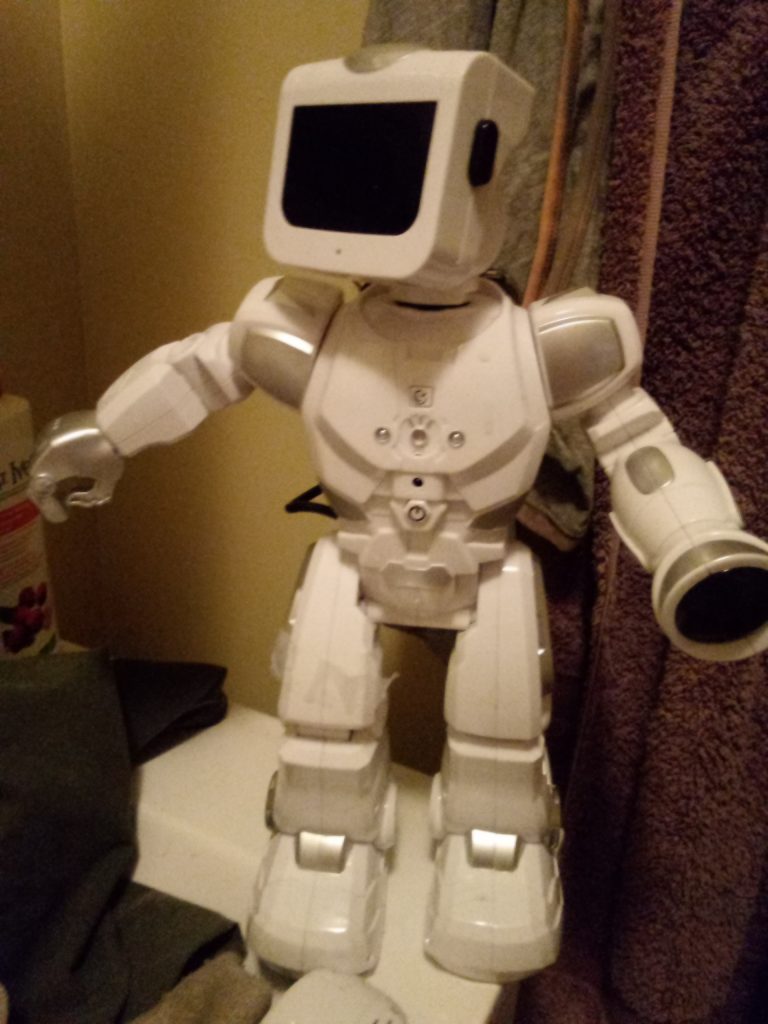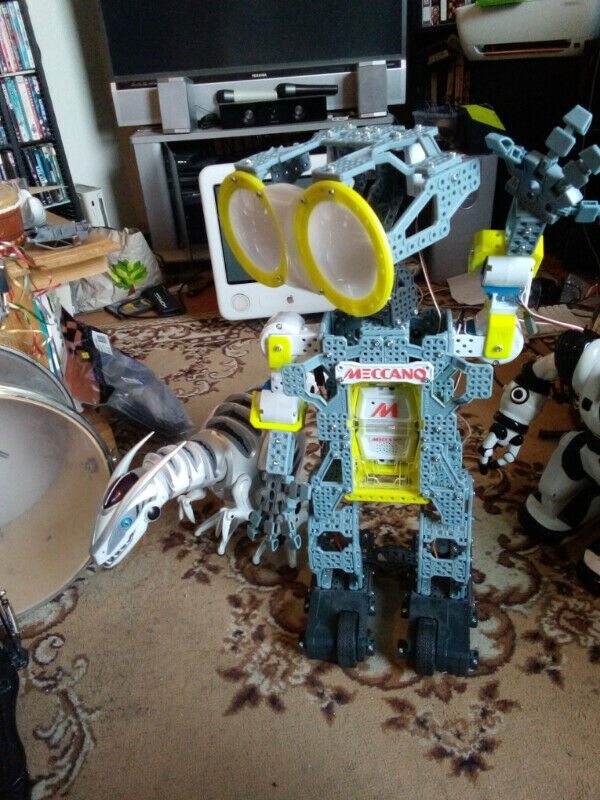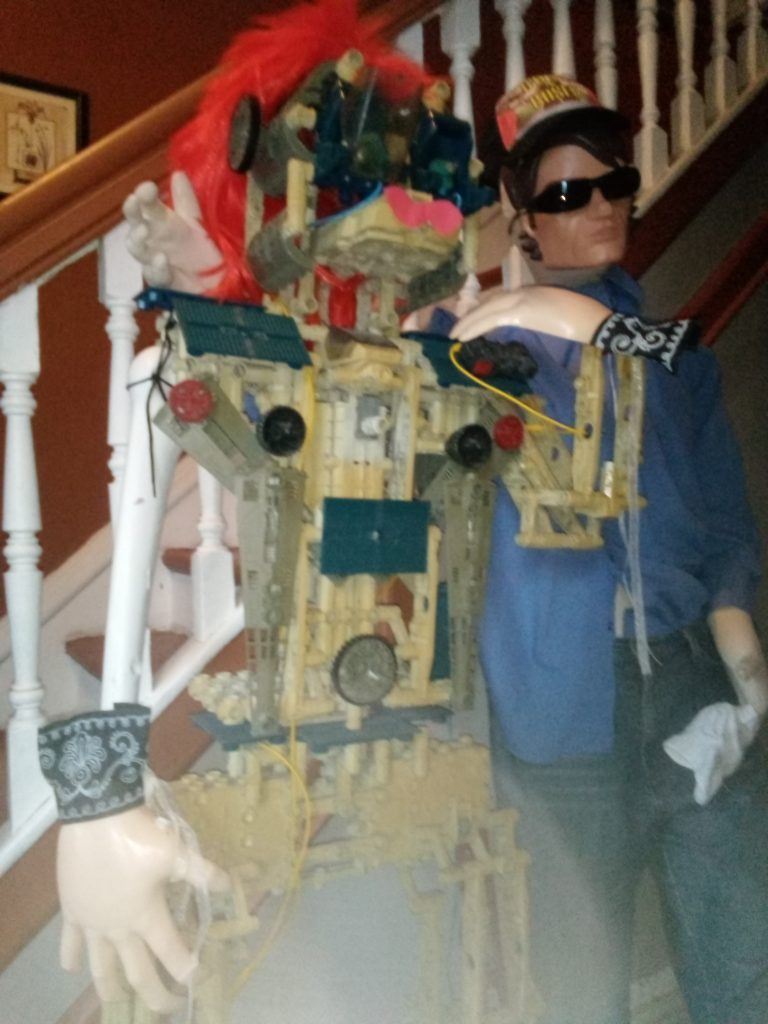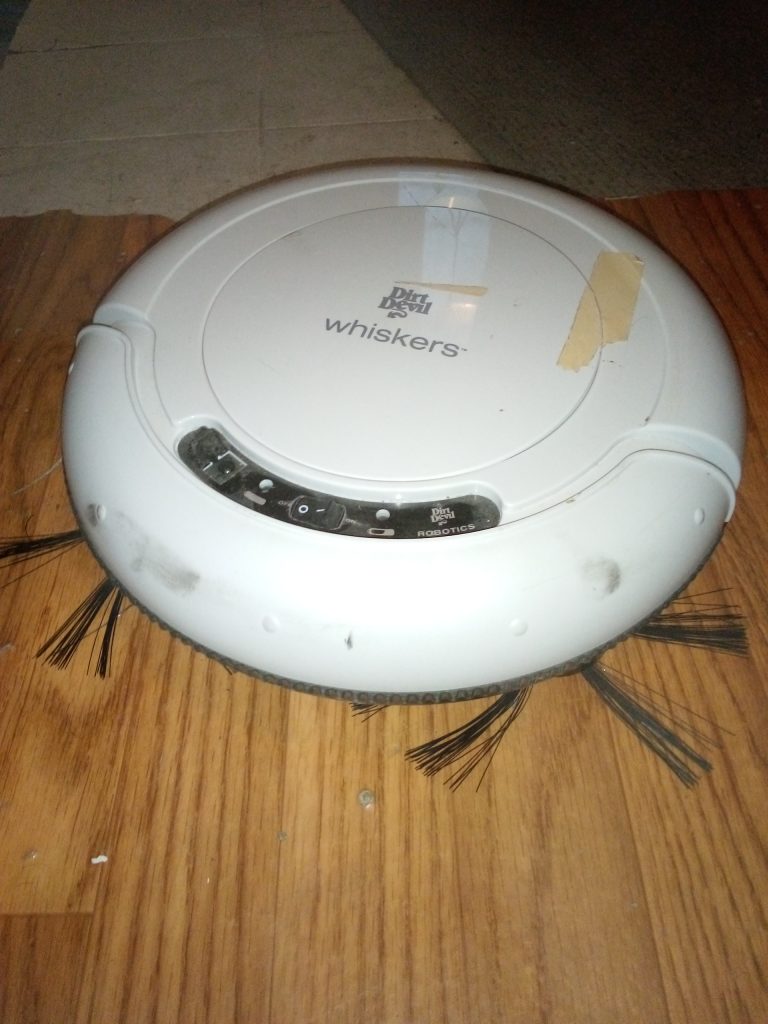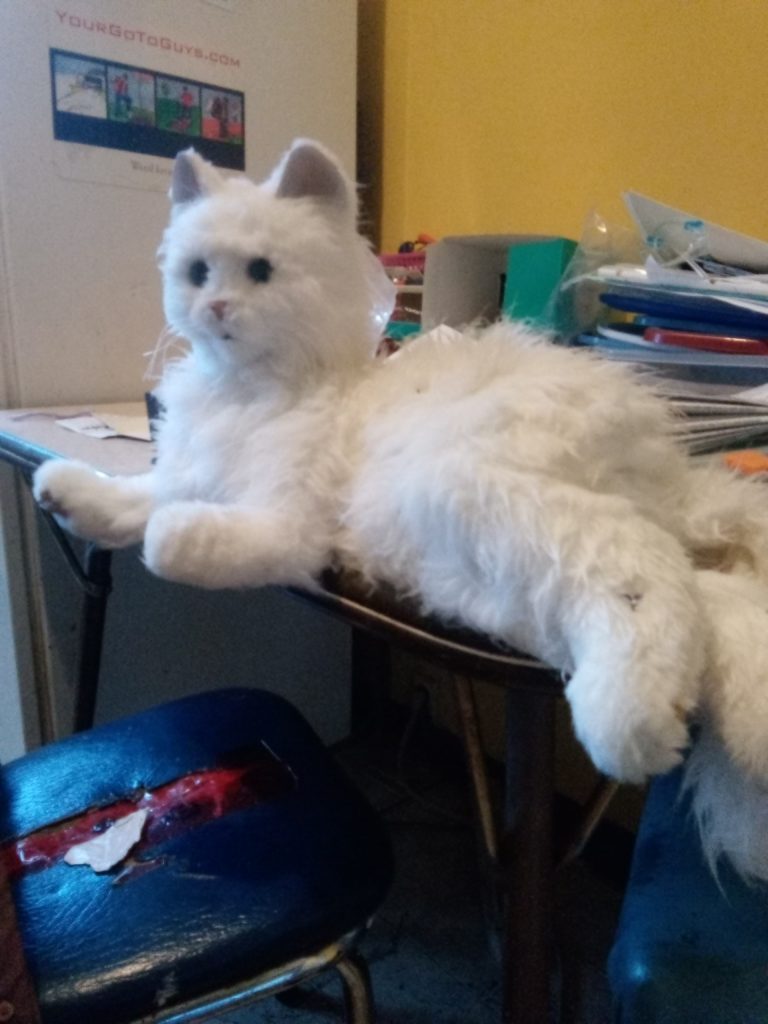We all have our own ideas about what a robot is and what one looks like.
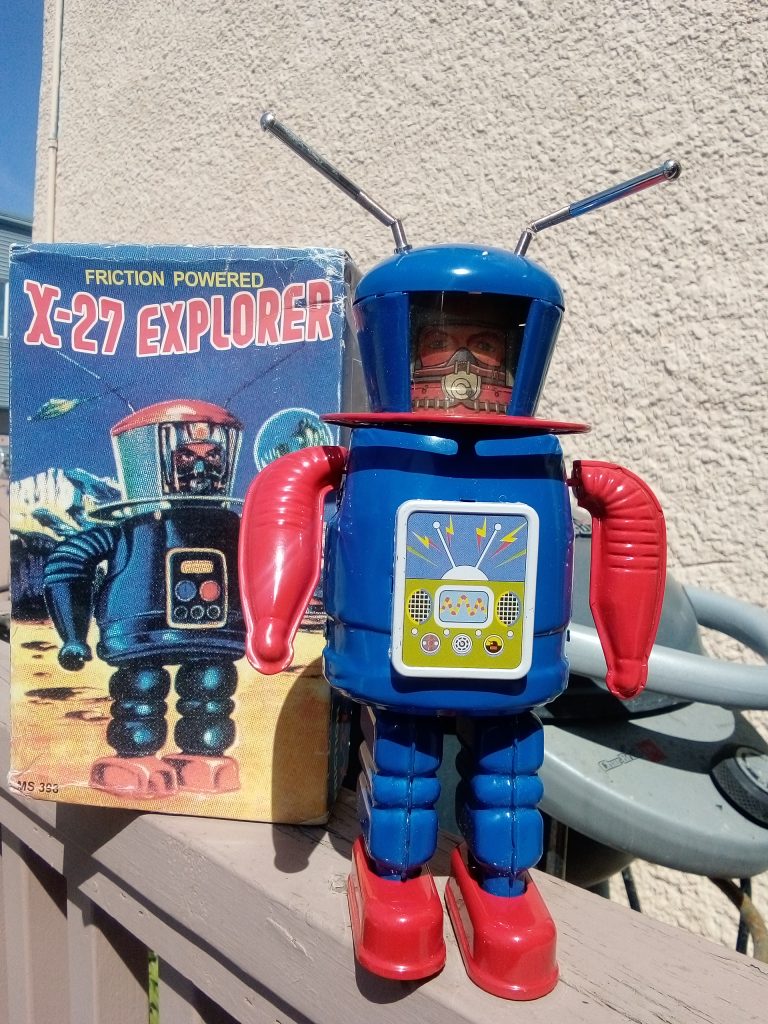
We’ve seen the television or movie robots like the evil destructive human like robots in the movies “the Terminator” with Arnold Schwazrenegger or the Matrix with Keanu Reeves. We’ve also perhaps seen the good and fun robots portrayed in old tv cartoon shows like the Jetsons and newer movies like Star Wars.
Lets start by going with some formal definitions of terms like robotics and robots.
If you go on Google, it will say that Robotics is “a branch of mechanical, electric and electronic engineering and computer science. It deals withe design, construction, operation and application of robots as well as computer systems.”
Basically, robotics is the branch of technology that deals with physical robots.
Now comes the definition for a robot.
First lets throw out some historical trivia.
The word “robot” was first used by a writer Karel Capek in his 1920’s play about the future titled, “R.U.R or Rossum’s Universal Robots”. The word “robot” itself is a Czech word which means “forced labor”.
So robots are programmable machines that can carry out a series of actions autonomously or semi autonomously by interacting with the real world using sensors and other devices.
It seems that everyone has their own definition of what makes a robot so lets mention 3 schools of thought about this.
Some say that robots have three main characteristics- sensing, movement and energy.
Others say that robots do 3 things in a form of a loop based on some feedback: they sense things, compute and then act and repeat the loop.
Still others say that the 3 most basic parts of a robot are its sensors, it’s actuators and its computer. With this view it is said that the robot needs sensors to contact things in its environment. Then the robot will use its arms or legs or wheels which are called actuators to move around and then it will use its brain to process all of this information and take action.
Now how we have traditionally understood robots comes from what we have seen on tv or in the movies.
We usually see robots as clunky metal or plastic human looking things, walking or gliding on wheels.
It is extremely difficult to have a human size robot walking on a flat surface and its even more difficult to have it walk on bumpy outdoor terrain or on a ladder…but this is being done more and more lately.
Usually the simplest way to get a robot moving is on wheels or to have it shuffle along like it is a 100 year old disabled person.
We see industrial work robots on television in a car manufacuring plant with a long line of robot arms assembling cars or we see dozens of industrial robots moving around on wheels in an Amazon packing and distribution center.
Now we are about to discuss the different branches of robotics and the types of robots that you may see from your robot vacuum or pool cleaner, to your companion cat robot that your grand mother may have, or the warehouse robot you may have where you work.
We have seen huge robotics companies like Hanson Robotics showing off their very human looking and acting robot Sophia on late night talk shows and we have seen the television show Westworld with their robots which portray a very dark future with the robots going out of control.
We have also seen a squad of dancing human like robots by the company Boston Dynamics and also their bizarre looking dog like robots running for miles into the forest tracking down a thief in the well made television series called Black Mirror.
It can be very difficult to find the best way to categorize the robotics industry but lets try a few ways for now. You can talk about two basic divisions of robots.
1. consumer and
2. industrial robots
Under consumer robots we will have things like …companion robots, house cleaning vacuum robots, pool cleaning, lawn mower and eavestrough cleaning robots. We also have toy robots and flying drones and more in this category which is usually affordable at under $1,000.
We could also use a more specific categorization of robots like this.
1. consumer robots
2.industrial robots
3. medical robots
4. educational robots
5. telepresence robots
6. military
7. aeronautics
We could also choose to create the sub categories undermany of these main categories.
Under the industrial robot category we could talk about indoor versus outdoor robots.
We have indoor robots like warehouse picking and sorting robots, assembly (painting/adding) robots, and we have outdoor ground robots that operate on wheels, tank treads or legs, and we also have under water robot or sky drone robots etc.
We could even instead use the formal scientific way to categorize industrial robot types such as as SCARA robots, cartesian, articulated, cylindrical, delta, orbital, polar and collaborative robots.
We could even try to categorize robots bytheir particular industry like: agriculture, aeorospace, construction, defence, energy, government, medical (healthcare, dissinfection), mining, retail, delivery, transportation, logistics, mining, utilities, education, consumer, AMR (autonomous mobile robots), UAV (unmanned aerial vehicles), UUV (unmanned underwater vehicles)
So its not an easy question when someone asks what types of robots are there today?
Now RC or remote control cars and moving mannequins at haunted houses and Disneyland are not really robots but they can look like robots since they move around and may talk or have human like qualities.
They however are more often examples of what are called animatronics.
Robots are usually autonomous which basically means that they can move in their environment without human interaction by using their built in touch sensors and sound sensors etc.
Animatronics usually move because they have been given a program or a sequence of moves to do and thats all they can do.
RC cars and most older robot toys move when the operator uses the remote control device.
The dancing Gemmy Frankenstein monster has a body which sways like it is dancing and a head which goes side to side while a circuit board inside plays a few songs to which the dolls move moves along and its eyes blink.
To most people they would say that he is a robot but he is not. I plan to add some sensors to it and an arduino microcontroller and a wheeled base so it can move like a robot vacuum and perhaps say things based on where it is in the house. Then it would be more like a simple robot.
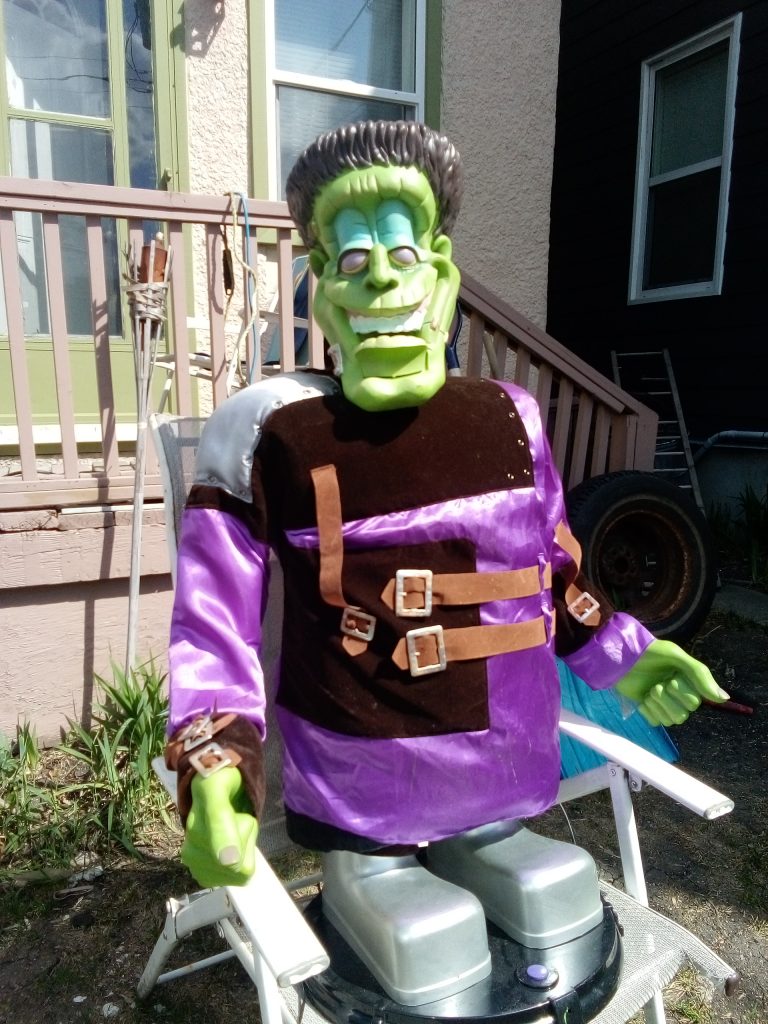
This line between simple toy and actual robot is changing as more computerization and programming is going into the newer theme park displays.
Older animatronics have simply used control systems like DMX to move them according to a pre entered routine or to move them live with a remote control.
DMX is an electronic technology which has been used for decades in the hotel/bar business to move laser light beams around a stage in a preprogrammed manner with the lights being attached to rotating platforms. This technology could be used to make s simple robot look alike where the head could be made to move around or the arms and legs could move.
The more advanced robotic displays will soon be a form of autonomous robots which will mean that they will move around more on their own and rely on their built in sensors and programming to avoid objects and detect sounds and objects and dangers etc.
So lets explore our next menu option where we will give more detail to the different types of robots.
You can also go to our Facebook site for more conversation. www.facebook.com/toystowork site.
Please select from the menu one of the many different types of robots like
- consumer (vacuums, lawn mowers, companion cats)
- industrial
- education
- military
- medical
- aeronatics
- telepresence
- humanoid
